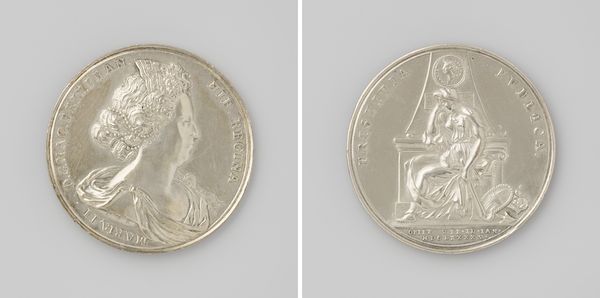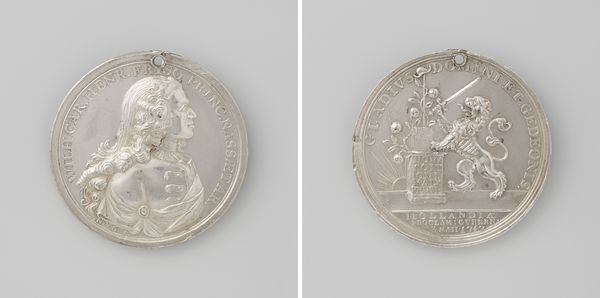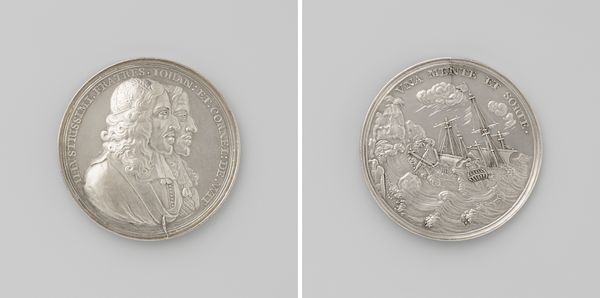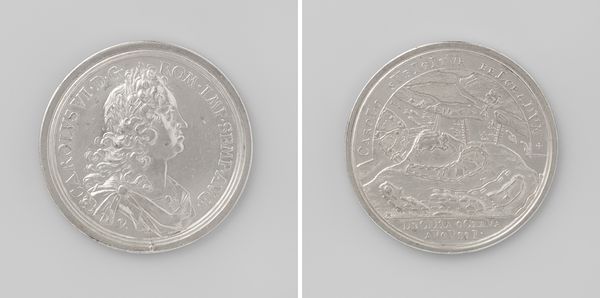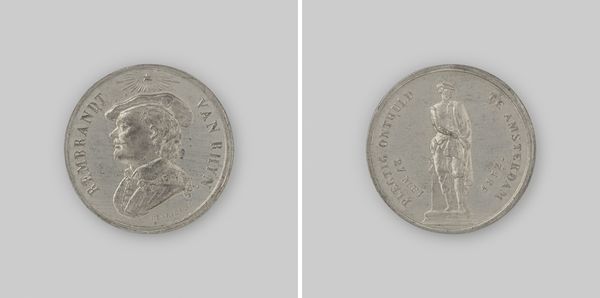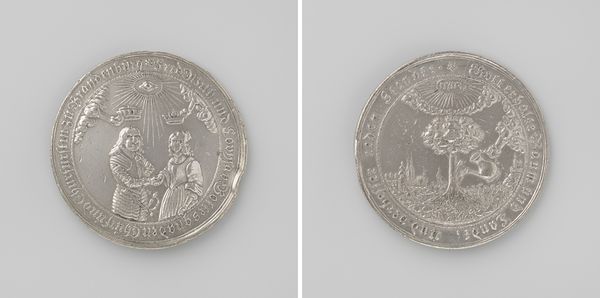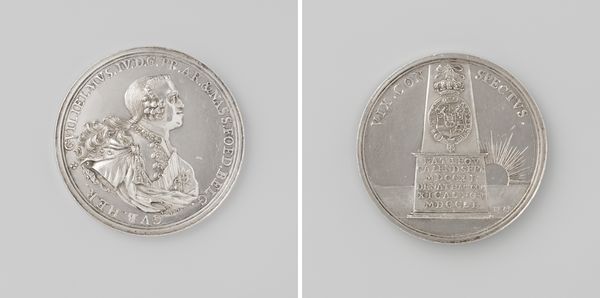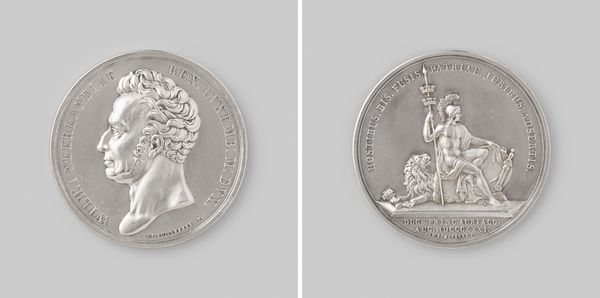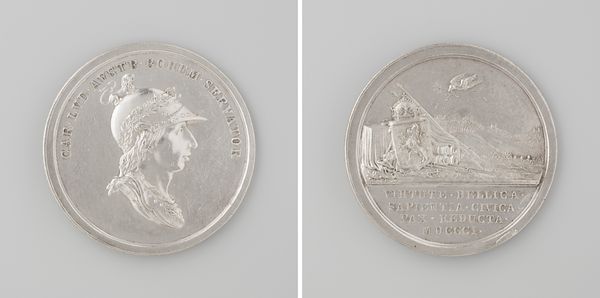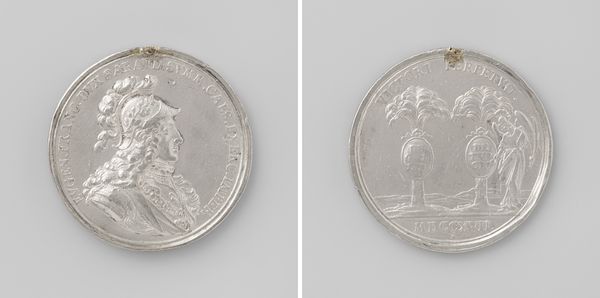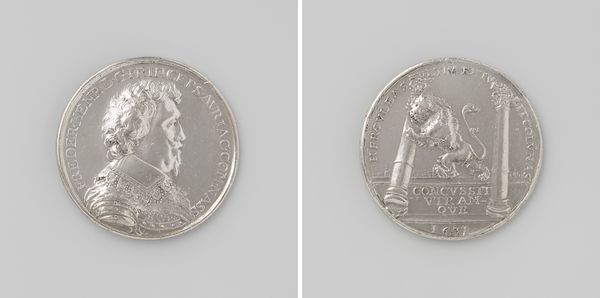
Dimensions: diameter 6.1 cm, weight 931 gr
Copyright: Rijks Museum: Open Domain
Curator: This impressive metal engraving from 1687 features Petrus Jurieu, a professor and preacher from the Walloon community in Rotterdam. Look closely; the artist has captured his profile with remarkable detail. Editor: My initial reaction is quite stark, actually. The coin is cleanly bisected in terms of imagery; the professor exudes a stoic intellectualism, but juxtaposed with the demonic imagery on the other side, I’m unnerved! It makes me wonder about the complex social dynamics at play. Curator: Exactly! Jurieu was a controversial figure, a Huguenot who fiercely opposed Louis XIV and Catholic absolutism. That dragon you see is laden with symbolism: multiple heads sprouting from its back representing the Antichrist. This piece operates on so many levels; Jurieu sought to decipher apocalyptic prophecies and he viewed the French monarchy as evil. Editor: Ah, so the beast serves as more than mere embellishment—it's a powerful political statement disguised in biblical allegories. The phrase "Quis similis bestiae?"--Who is like the beast?--lends itself to potent resistance against oppression of faith! How very timely for him! I find myself questioning power structures still operating centuries later! Curator: I agree entirely. There is, too, Jurieu’s engagement with interpreting scripture through a political lens and, for him, prophecy directly affected political action and reform. The composition subtly underscores how intertwined religious identity and political resistance were during the baroque period. Editor: The image on the reverse with the tree rising out of one of the demon's heads brings in all kinds of apocalyptic anxieties… Curator: It's remarkable how this small metal disc manages to condense complex theological debates and social anxieties of an entire era. Its symbolism encourages engagement even centuries later, wouldn't you agree? Editor: Definitely, what initially struck me as simply ominous has become a compelling commentary on religious persecution and resistance in baroque Europe. The iconography unlocks a whole history.
Comments
No comments
Be the first to comment and join the conversation on the ultimate creative platform.
